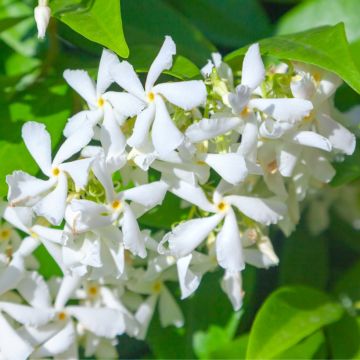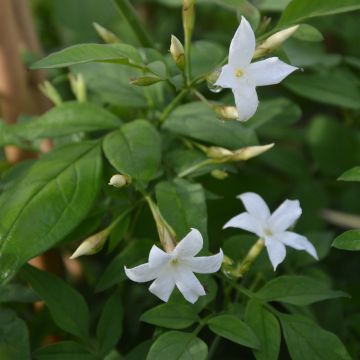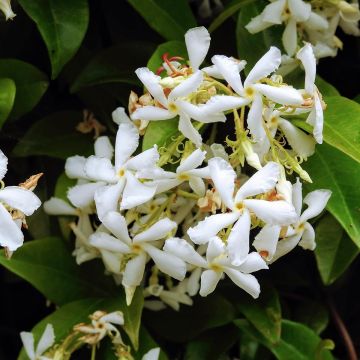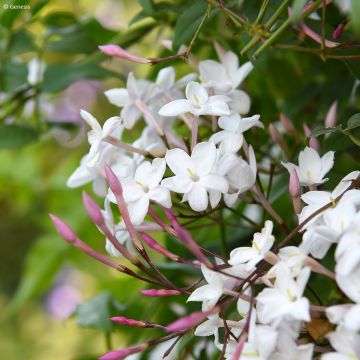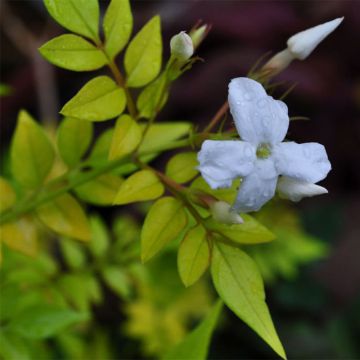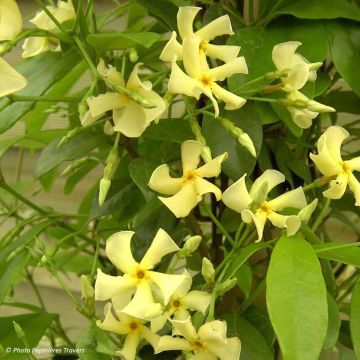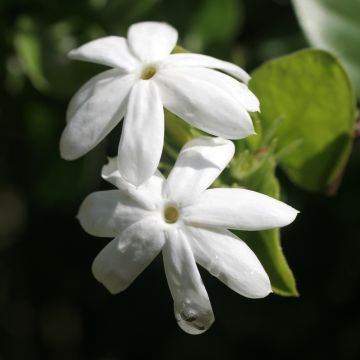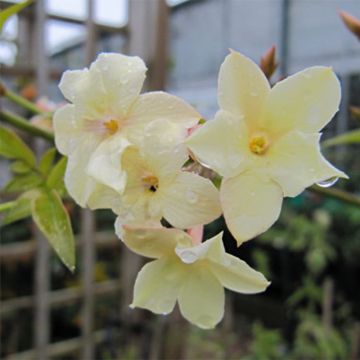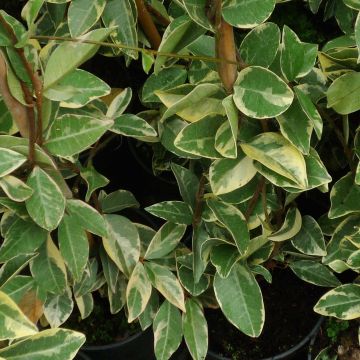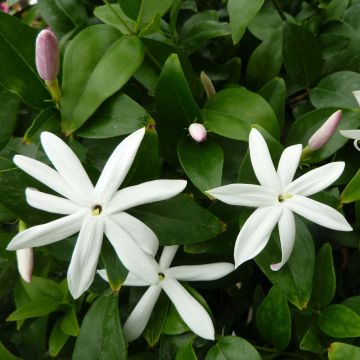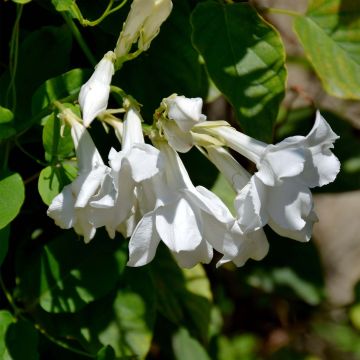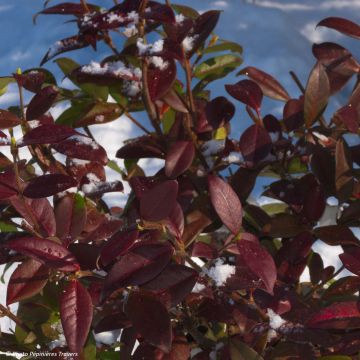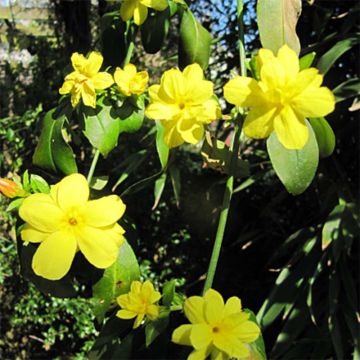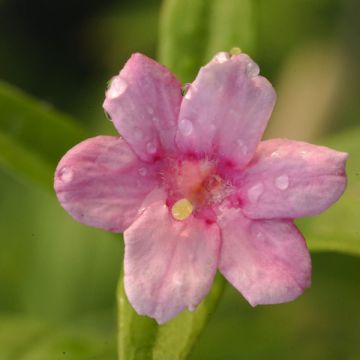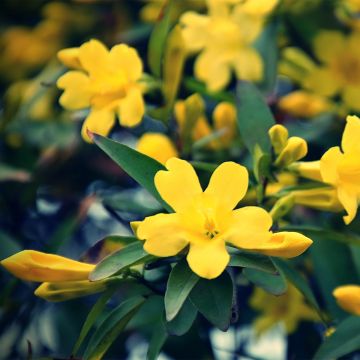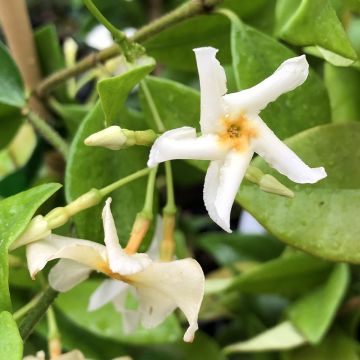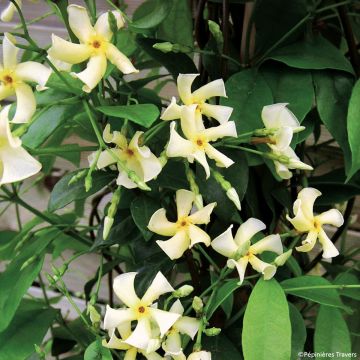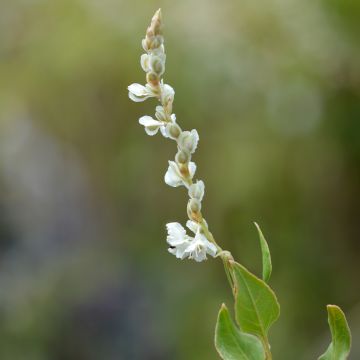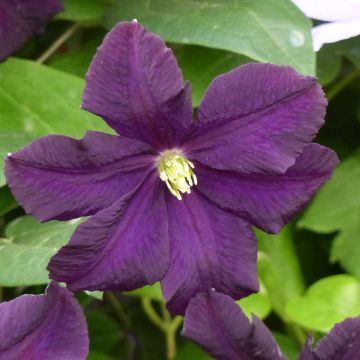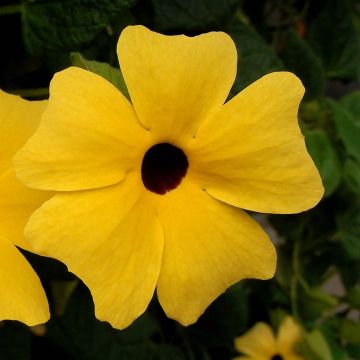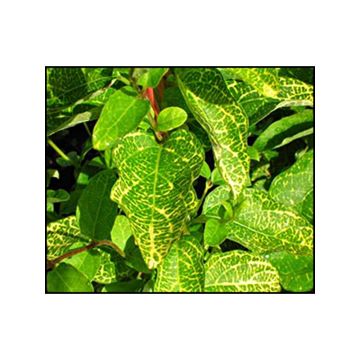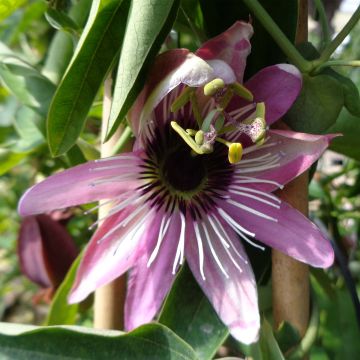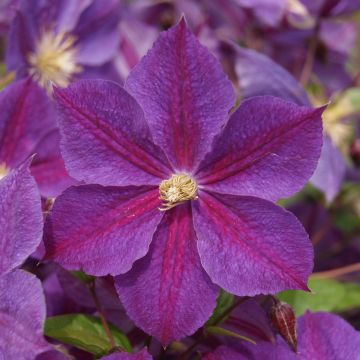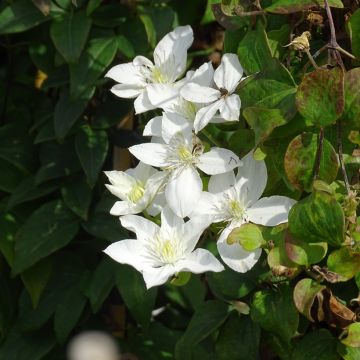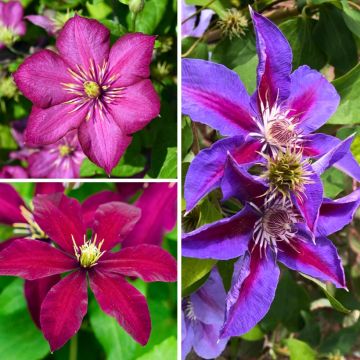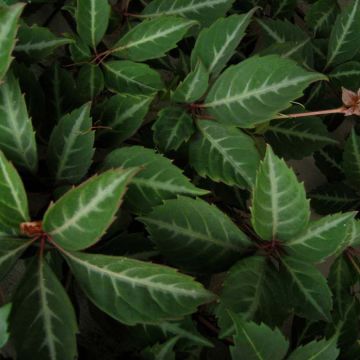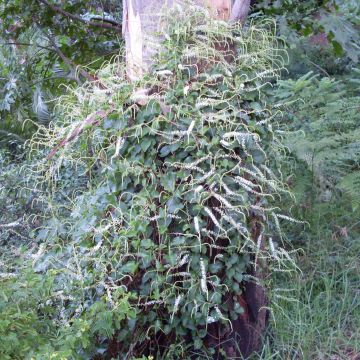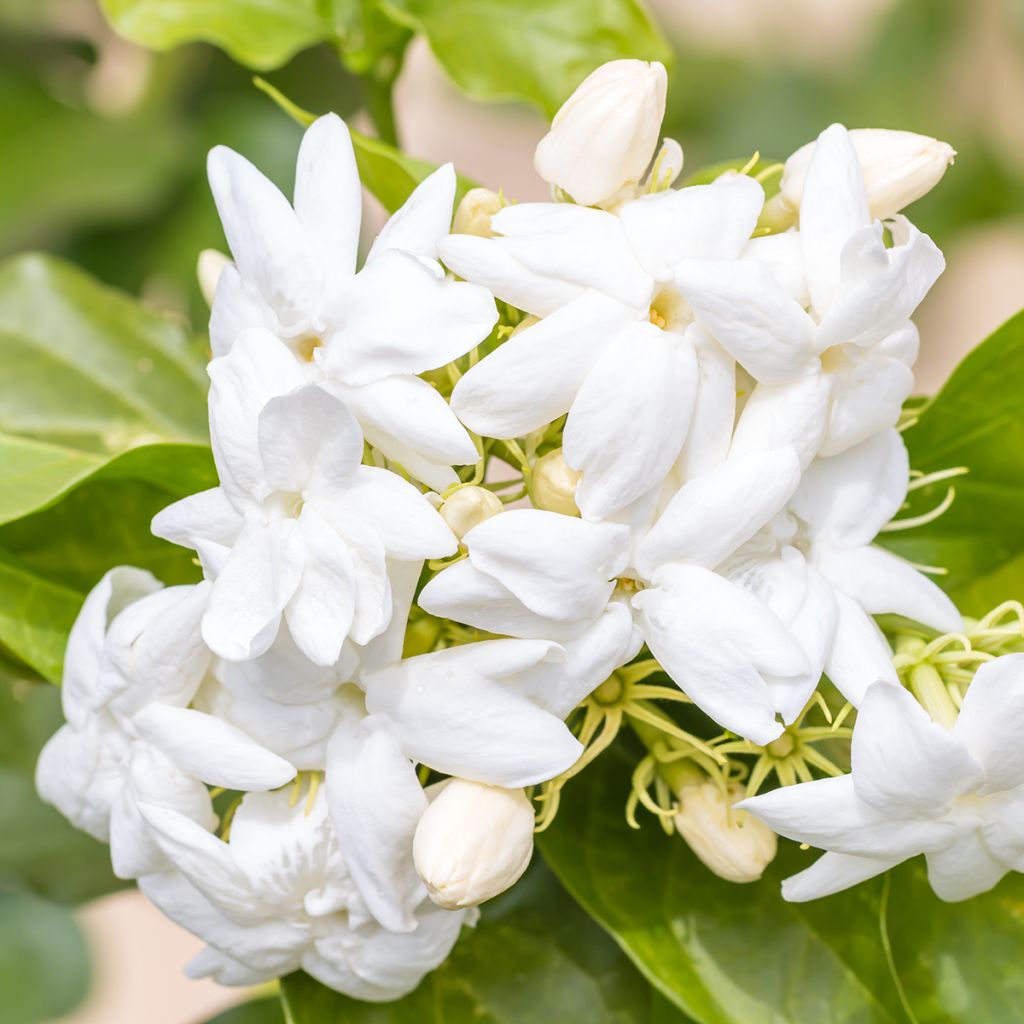

Jasminum sambac - Arabian Jasmine
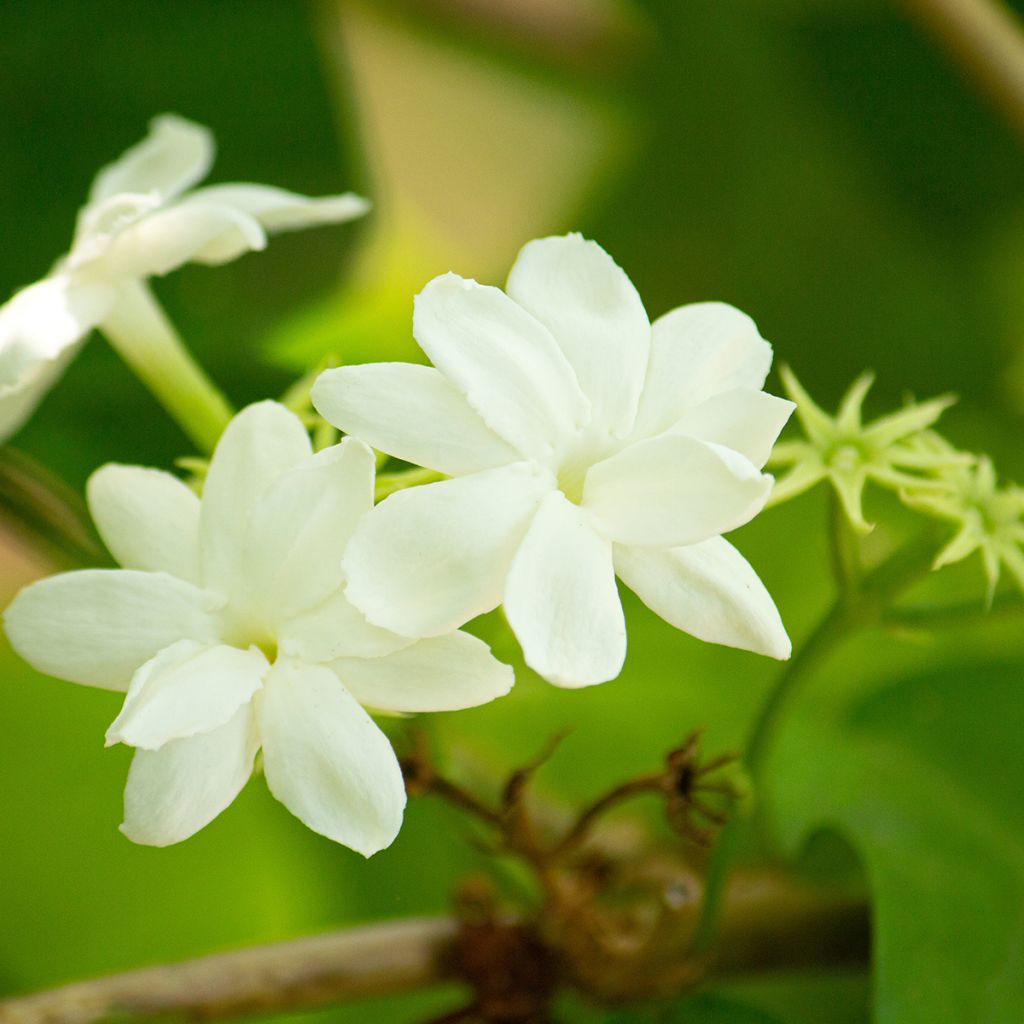

Jasminum sambac - Arabian Jasmine
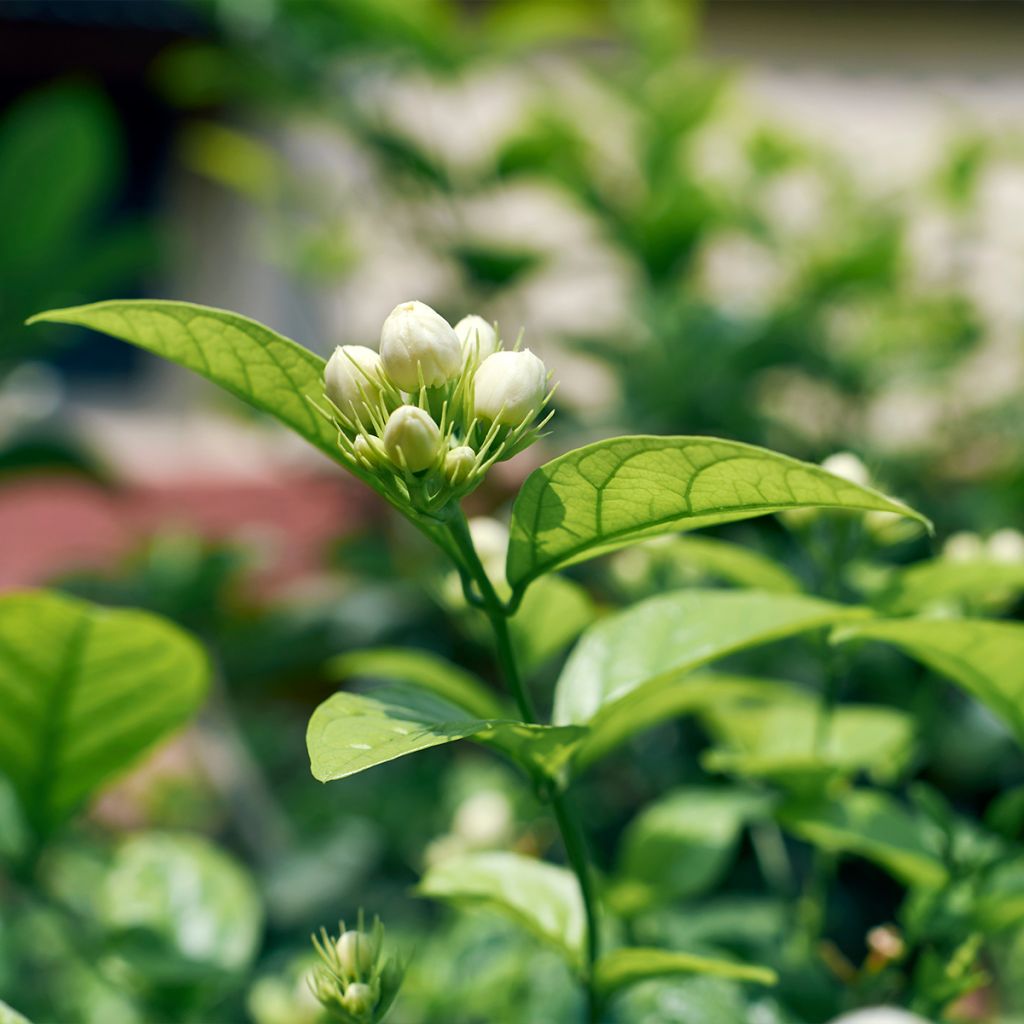

Jasminum sambac - Arabian Jasmine
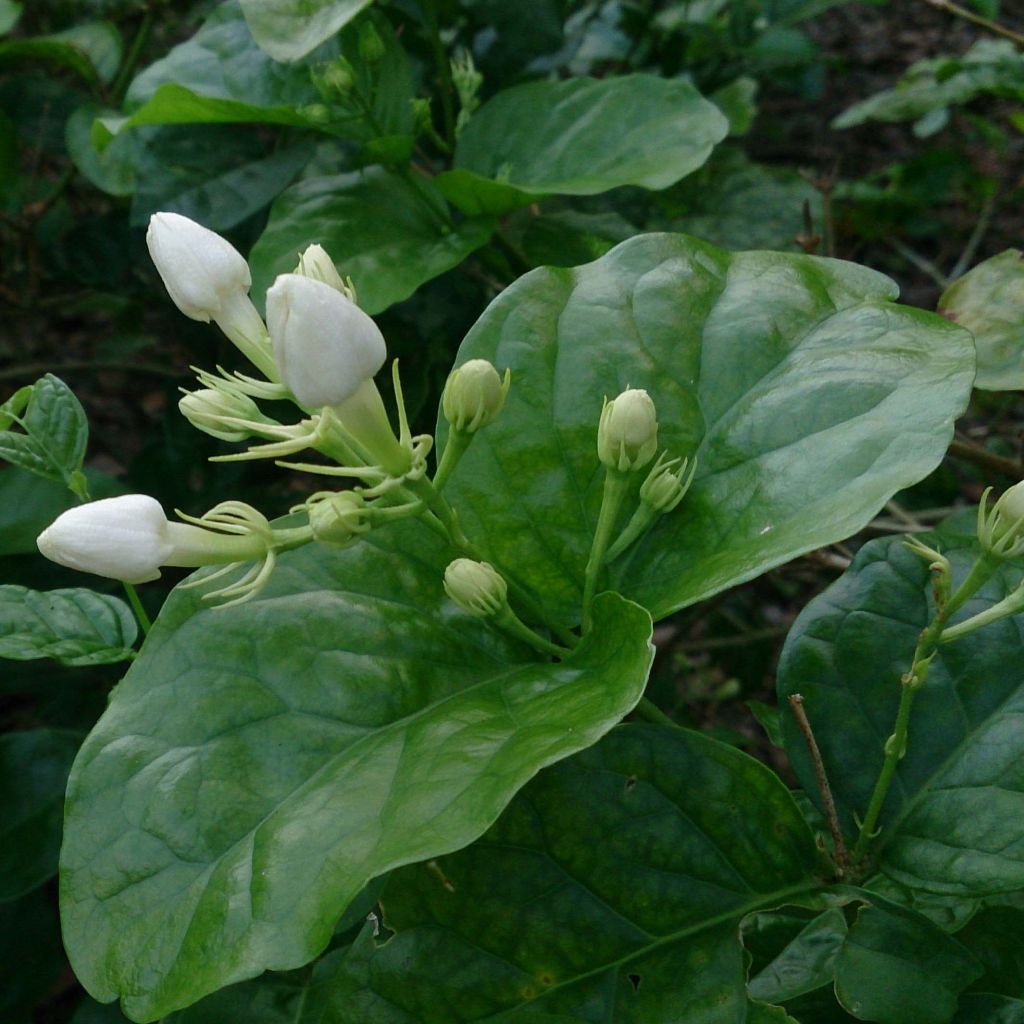

Jasminum sambac - Arabian Jasmine
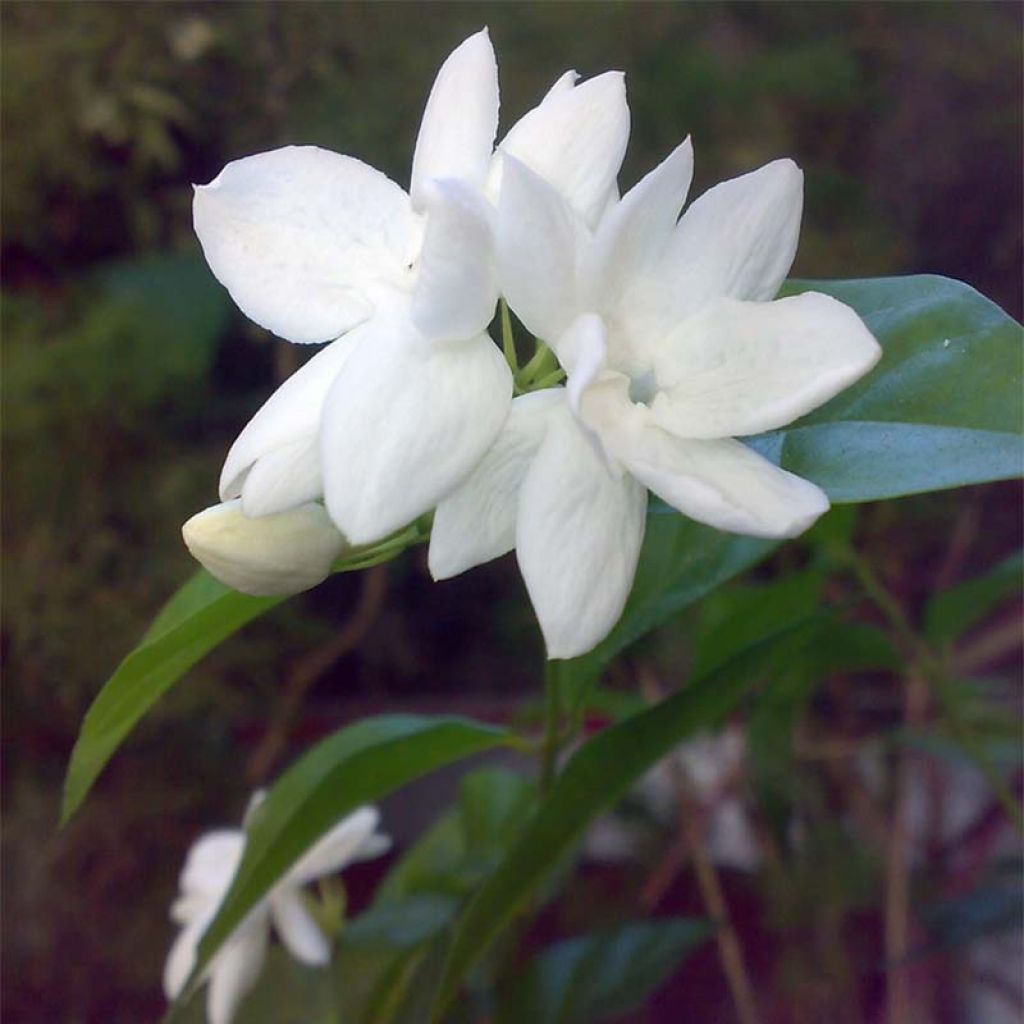

Jasminum sambac - Arabian Jasmine
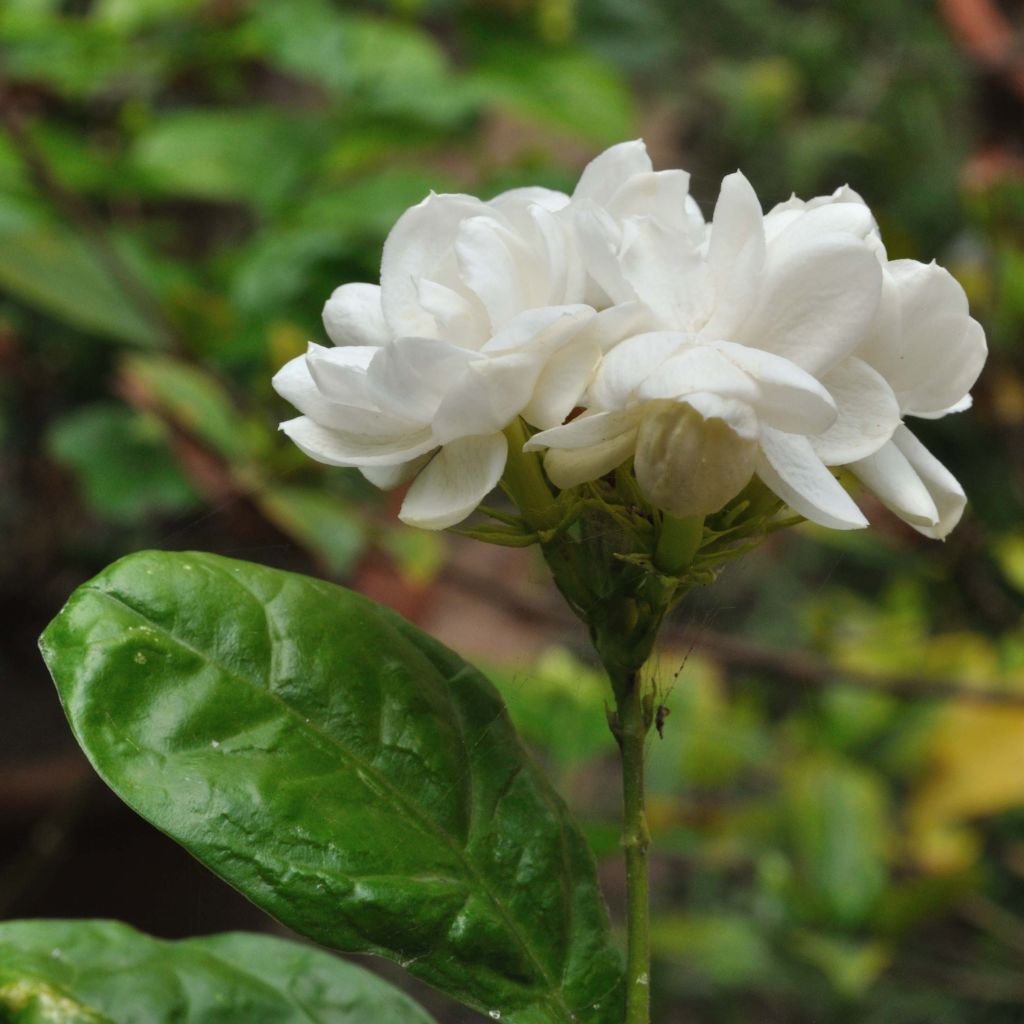

Jasminum sambac - Arabian Jasmine
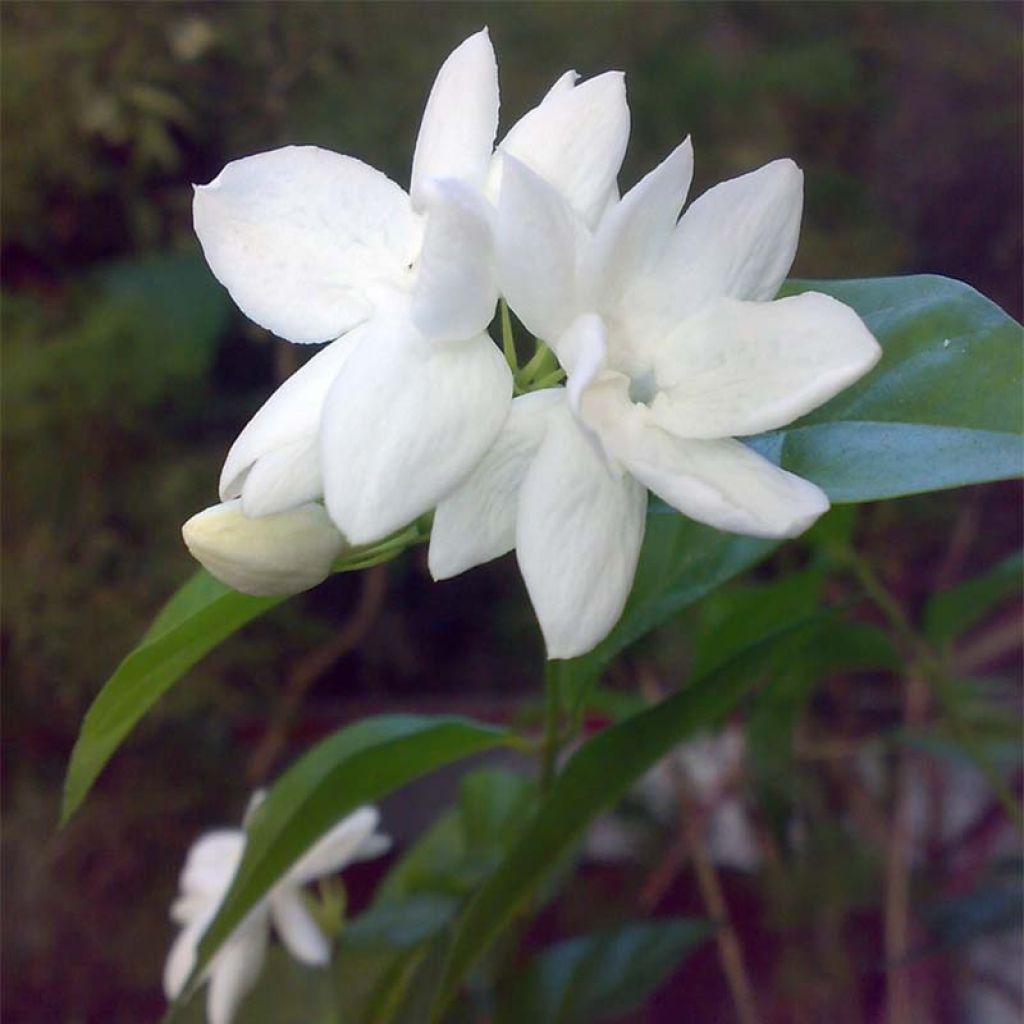

Jasminum sambac - Arabian Jasmine
Jasminum sambac - Arabian Jasmine
Jasminum sambac
Arabian Jasmine, Sambac Jasmine
Why not try an alternative variety in stock?
View all →This plant carries a 6 months recovery warranty
More information
We guarantee the quality of our plants for a full growing cycle, and will replace at our expense any plant that fails to recover under normal climatic and planting conditions.
From €5.90 for pickup delivery and €6.90 for home delivery
Express home delivery from €8.90.

Does this plant fit my garden?
Set up your Plantfit profile →
Description
If the Jasminum sambac is better known as the Arabian Jasmine, it is undoubtedly due to the heady fragrance of its large white flowers, evoking all the warmth and sensuality of the Arabian Nights. Its origins are actually found in the Indian Himalayas, more precisely in Kashmir. And it is in China that its flowers are traditionally used to perfume the famous jasmine green tea with their extraordinary aroma. It is a tender bush, whose long climbing stems, unable to cling to a support on their own, must be trained. With its elegant dark green foliage, this mythical plant is capable of flowering almost all year round in a greenhouse or conservatory. In France, under favorable conditions, it retains its foliage in winter and blooms in open ground throughout the summer, perfuming a whole area of the garden or even a large terrace on summer evenings.
The Jasminum sambac belongs to the Oleaceae family. This botanical species is likely native to the valleys of Northeast India, which are governed by a subtropical climate. Not very hardy, perfectly adapted to the mildest Mediterranean climates, this jasmine is capable of regrowing from the stump after experiencing a brief frost of around -5°C (23°F), but at the expense of its appearance and flowering. It was probably introduced to Egypt in ancient times before spreading in cultivation to the hot regions of the Mediterranean basin.
This climbing bush will reach a height of about 2.50 m (8ft) to 3 m (10ft) in open ground under favorable conditions and will spread over 1 to 2 m (3 to 7ft). Its growth is rapid. In a container, its dimensions will remain much more modest. The flowering is long in cool soil and hot climate, lasting for at least three months from June to September, and then more sporadically throughout the year. The plant produces many clusters of 3 to 12 flowers with a diameter of 3 cm (1in), mainly at the end of the stems. Each flower is composed of a tube opening into 5 to 9 lobes, giving them a more or less double appearance. Their fragrance, both powerful, subtle, and complex, is recognizable among all. The vegetation of this jasmine consists of long flexible and supple stems that weave their way between the branches of neighboring plants. They are not twining and have no attachment system. The foliage persists more or less in winter; it consists of large elliptical leaves of variable size (up to 9 cm (4in) long and 6 cm (2in) wide), shiny dark green, grouped in threes. The stems become woody and light brown with age, devoid of leaves. The fruit is a round berry, black when ripe, with a diameter of 6 mm (0in).
In suitable climates, the Jasmin Sambac will climb the surrounding bushes, creating a surprising hedge, or can be trained on trellises, arches, pergolas, stair railings, or balconies. In all our regions, plant it in a container on a terrace so that it can be stored indoors during winter and to fully enjoy its wonderful fragrance. However, avoid placing it near a bedroom with an open window; some claim that its scent disrupts sleep and can cause headaches. For example, it can be associated, in open ground or in a pot on the terrace, with another climbing plant with a different flowering time, such as Clematis cirrhosa, Jasminum nudiflorum, or Ampelaster carolinianus.
Its highly fragrant flowers are used in perfumery, to scent tea, and are included in traditional remedies in Asia. The essential oil extracted from them is used both in perfumery and in cooking. The Jasmin Sambac is the national flower of Indonesia and the Philippines.
Report an error about the product description
Jasminum sambac - Arabian Jasmine in pictures




Plant habit
Flowering
Foliage
Botanical data
Jasminum
sambac
Oleaceae
Arabian Jasmine, Sambac Jasmine
Himalayas
Other Jasmine
Planting and care
In our very mild regions, Jasminum sambac is planted in open ground preferably in spring. It can be planted in pots all year round. Install it in a deep, fertile soil that is kept moist to help it establish. It requires well-drained soil and will thrive in a very sunny location sheltered from cold winds, or even in partial shade in hot climates. Arabian jasmine tolerates the presence of limestone in the soil quite well, but not in excess. Mulch the base and water generously as soon as the flowers appear. When the temperature drops below -5°C (23°F), the above-ground parts freeze and turn black. However, if the stump is well established and well protected, new shoots will emerge in spring. Pruning of the oldest stems (brown) is necessary in late winter, at the start of the growing season. Once established, this plant can tolerate short periods of drought, but will flower more abundantly if the soil remains slightly moist. However, be careful not to overwater, as it dislikes excessively wet soil. It can tolerate partial shade, but flowering is more abundant in full sun. Avoid exposing it to cold drafts to preserve its flowers. Outside the privileged areas of the Mediterranean region or the south of the Atlantic coast, plant jasmine against a south-facing wall that will provide it with some warmth.
For container cultivation: choose a container of 50 cm (20in), with a good, rich, fresh and light soil, specially designed for Mediterranean plants. From early spring until mid-September, enrich with liquid fertilizer every 15 days, always on moist soil. In summer, it needs abundant watering, but in winter, let the soil dry well between waterings. Jasmine is very vigorous even in a pot and can become bare at the base. In this case, prune the old branches to leave only 3 young shoots. In winter, place it in a heated veranda or greenhouse, around 16°C (60.8°F) and with plenty of light. Regularly spray the foliage with non-limestone water to prevent attacks from red spiders.
Planting period
Intended location
Care
-
, onOrder confirmed
Reply from on Promesse de fleurs
Summer flowering climbers
Haven't found what you were looking for?
Hardiness is the lowest winter temperature a plant can endure without suffering serious damage or even dying. However, hardiness is affected by location (a sheltered area, such as a patio), protection (winter cover) and soil type (hardiness is improved by well-drained soil).

Photo Sharing Terms & Conditions
In order to encourage gardeners to interact and share their experiences, Promesse de fleurs offers various media enabling content to be uploaded onto its Site - in particular via the ‘Photo sharing’ module.
The User agrees to refrain from:
- Posting any content that is illegal, prejudicial, insulting, racist, inciteful to hatred, revisionist, contrary to public decency, that infringes on privacy or on the privacy rights of third parties, in particular the publicity rights of persons and goods, intellectual property rights, or the right to privacy.
- Submitting content on behalf of a third party;
- Impersonate the identity of a third party and/or publish any personal information about a third party;
In general, the User undertakes to refrain from any unethical behaviour.
All Content (in particular text, comments, files, images, photos, videos, creative works, etc.), which may be subject to property or intellectual property rights, image or other private rights, shall remain the property of the User, subject to the limited rights granted by the terms of the licence granted by Promesse de fleurs as stated below. Users are at liberty to publish or not to publish such Content on the Site, notably via the ‘Photo Sharing’ facility, and accept that this Content shall be made public and freely accessible, notably on the Internet.
Users further acknowledge, undertake to have ,and guarantee that they hold all necessary rights and permissions to publish such material on the Site, in particular with regard to the legislation in force pertaining to any privacy, property, intellectual property, image, or contractual rights, or rights of any other nature. By publishing such Content on the Site, Users acknowledge accepting full liability as publishers of the Content within the meaning of the law, and grant Promesse de fleurs, free of charge, an inclusive, worldwide licence for the said Content for the entire duration of its publication, including all reproduction, representation, up/downloading, displaying, performing, transmission, and storage rights.
Users also grant permission for their name to be linked to the Content and accept that this link may not always be made available.
By engaging in posting material, Users consent to their Content becoming automatically accessible on the Internet, in particular on other sites and/or blogs and/or web pages of the Promesse de fleurs site, including in particular social pages and the Promesse de fleurs catalogue.
Users may secure the removal of entrusted content free of charge by issuing a simple request via our contact form.
The flowering period indicated on our website applies to countries and regions located in USDA zone 8 (France, the United Kingdom, Ireland, the Netherlands, etc.)
It will vary according to where you live:
- In zones 9 to 10 (Italy, Spain, Greece, etc.), flowering will occur about 2 to 4 weeks earlier.
- In zones 6 to 7 (Germany, Poland, Slovenia, and lower mountainous regions), flowering will be delayed by 2 to 3 weeks.
- In zone 5 (Central Europe, Scandinavia), blooming will be delayed by 3 to 5 weeks.
In temperate climates, pruning of spring-flowering shrubs (forsythia, spireas, etc.) should be done just after flowering.
Pruning of summer-flowering shrubs (Indian Lilac, Perovskia, etc.) can be done in winter or spring.
In cold regions as well as with frost-sensitive plants, avoid pruning too early when severe frosts may still occur.
The planting period indicated on our website applies to countries and regions located in USDA zone 8 (France, United Kingdom, Ireland, Netherlands).
It will vary according to where you live:
- In Mediterranean zones (Marseille, Madrid, Milan, etc.), autumn and winter are the best planting periods.
- In continental zones (Strasbourg, Munich, Vienna, etc.), delay planting by 2 to 3 weeks in spring and bring it forward by 2 to 4 weeks in autumn.
- In mountainous regions (the Alps, Pyrenees, Carpathians, etc.), it is best to plant in late spring (May-June) or late summer (August-September).
The harvesting period indicated on our website applies to countries and regions in USDA zone 8 (France, England, Ireland, the Netherlands).
In colder areas (Scandinavia, Poland, Austria...) fruit and vegetable harvests are likely to be delayed by 3-4 weeks.
In warmer areas (Italy, Spain, Greece, etc.), harvesting will probably take place earlier, depending on weather conditions.
The sowing periods indicated on our website apply to countries and regions within USDA Zone 8 (France, UK, Ireland, Netherlands).
In colder areas (Scandinavia, Poland, Austria...), delay any outdoor sowing by 3-4 weeks, or sow under glass.
In warmer climes (Italy, Spain, Greece, etc.), bring outdoor sowing forward by a few weeks.

































